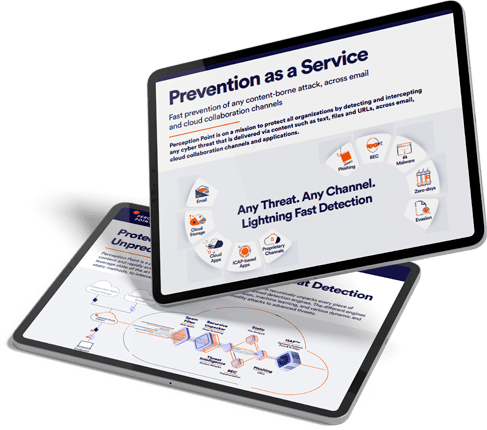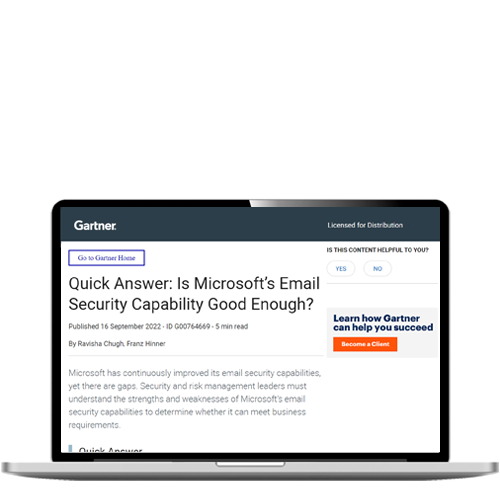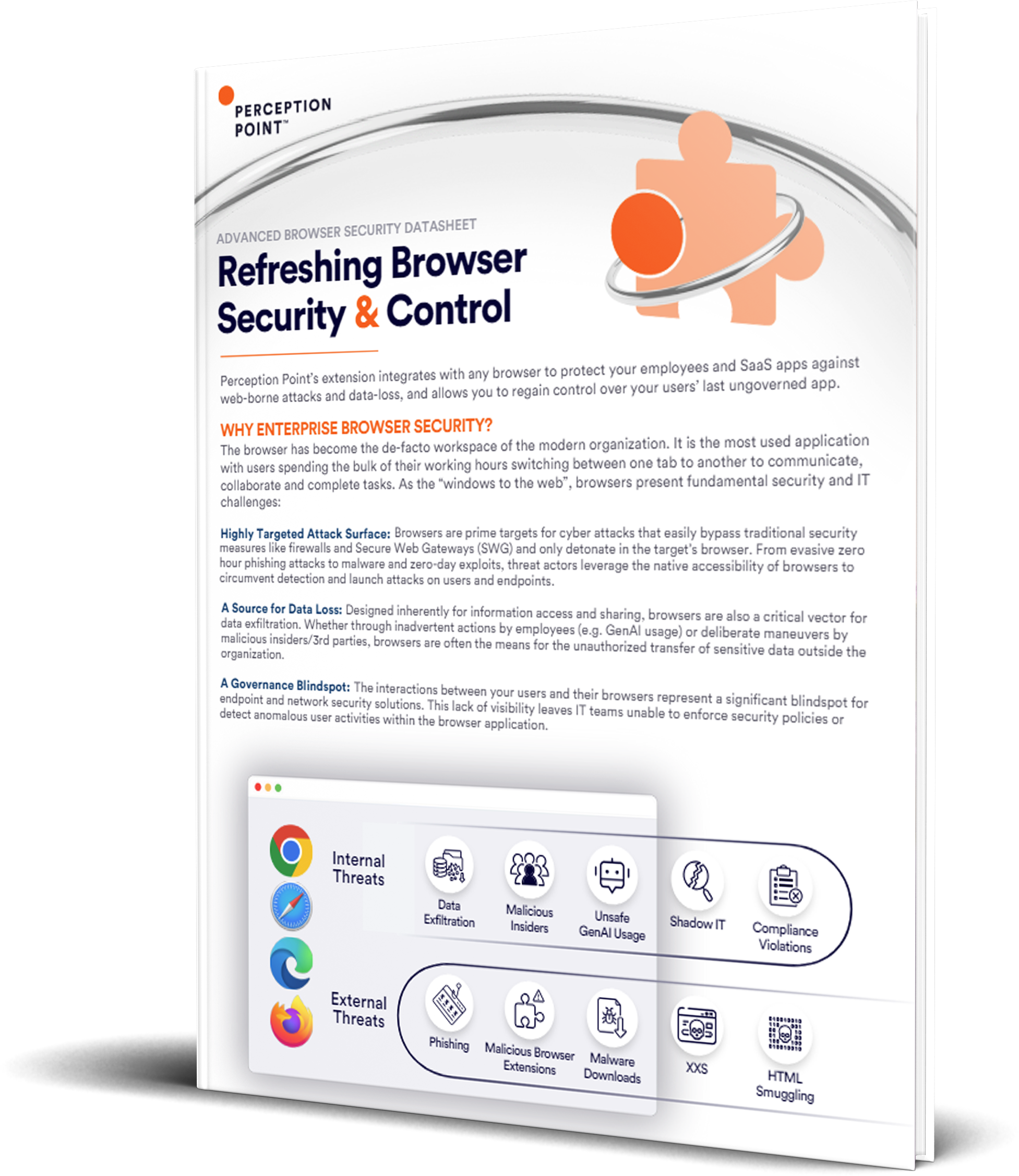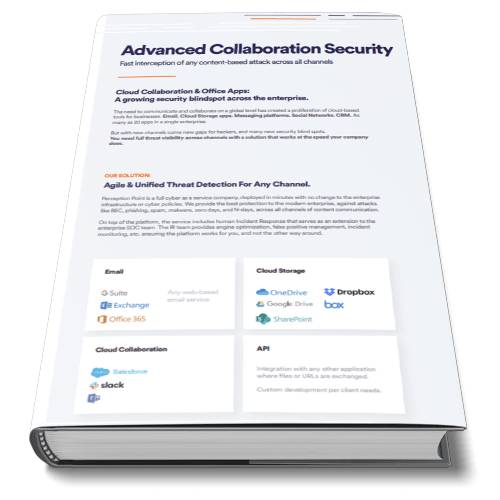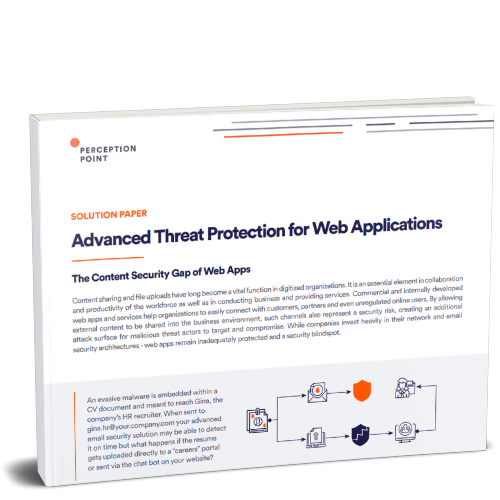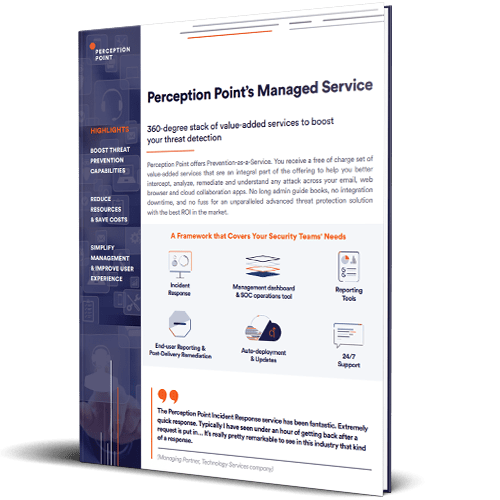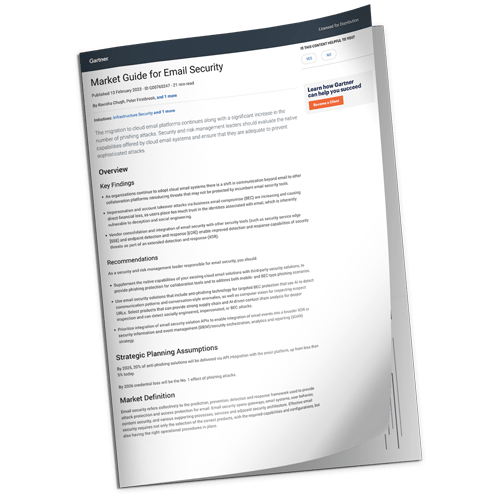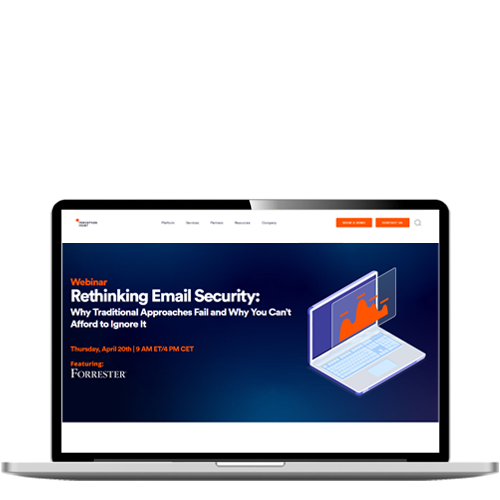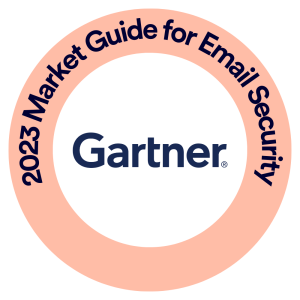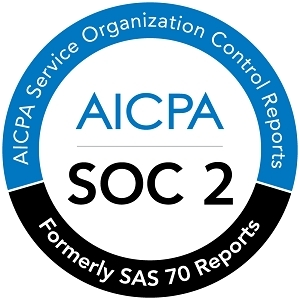What Is Business Email Compromise (BEC)?
Business Email Compromise (BEC) is a specific type of phishing attack. It is a sophisticated type of scam aimed at illicitly transferring funds or obtaining sensitive business information. Criminals use this tactic to infiltrate corporate email accounts and impersonate the owners, often with the end goal of performing fraudulent financial transfers. BEC schemes often involve a considerable amount of planning, including social engineering techniques to manipulate employees into complying with the attacker’s requests.
While many BEC attacks are focused on stealing money, some attacks aim to obtain strategic company information. By gaining access to email accounts, hackers can monitor business operations, setting the stage for additional fraudulent activities, data breaches, or compromise of intellectual property.
Business email compromise techniques have evolved, becoming more sophisticated and difficult to detect. BEC attacks often bypass traditional email security measures, requiring vigilance and advanced email security technology.
What Is Phishing?
Phishing is a type of cyber attack that falls under the umbrella of BEC attacks. Phishing involves tricking individuals into providing sensitive information, such as login credentials or credit card details, by masquerading as a trustworthy entity. This is commonly executed through fake emails, websites, or messages that appear to be from well-known companies or familiar contacts.
The objective of a phishing attack is to deceive the recipient into clicking malicious links or opening attachments, leading to the installation of malware, or to trick recipients into directly disclosing personal data. Despite its simplicity, phishing remains highly effective and can incorporate additional social engineering techniques, including more personalized elements to increase success rates.
Unlike other cyber threats, phishing attacks typically cast a wide net, targeting large numbers of people at once. This method relies on volume, with attackers expecting only a small percentage of recipients to fall for the bait.
In this article

Tal ZamirCTO, Perception Point
Tal Zamir is a 20-year software industry leader with a track record of solving urgent business challenges by reimagining how technology works.
TIPS FROM THE EXPERTS
- Implement an email security solution with real-time threat intelligence
Make sure your organization is using the most advanced email security solution to identify and block BEC attacks, such as domain-spoofing or lookalike domain attacks. - Monitor for subtle social engineering cues
Educate employees on less obvious signs of social engineering, such as changes in tone or grammar that could indicate an impostor, or an unusual level of urgency that may be out of character for the sender. - Simulate sophisticated BEC attacks in training
Regularly conduct advanced simulations that mimic the latest BEC tactics to test your employees’ ability to recognize and respond to such attacks under realistic conditions. - Adopt a ‘Zero Trust’ approach
Implement a Zero Trust model where email access is continually verified, requiring reauthentication for any sensitive actions or access from unrecognized devices, locations, or IP addresses.
Business Email Compromise vs. Phishing: Key Differences
Here are some of the main differences between BEC and phishing attacks.
1. Target and Specificity
Business email compromise attacks are highly targeted, focusing on individuals or departments within organizations that handle money transfers or sensitive information. The attackers spend time gathering information about their targets to craft convincing emails that mimic legitimate business correspondence. This targeted approach means that malicious activities are less likely to be detected.
Phishing attempts are usually less personalized and more about volume, targeting a broad audience without significant customization. Phishing emails are often generic, aiming to lure in as many victims as possible. This strategy relies on the law of averages, not the careful selection of targets.
2. Attack Complexity
BEC schemes are complex and carefully orchestrated. They often involve manipulating internal processes and communication protocols within a company. This might include intercepting legitimate emails, then using the information gathered to request unauthorized wire transfers or redirect payments. Attacks can involve multiple stages of planning and execution, often establishing backdoor access to maintain long-term presence within the company’s systems.
Phishing typically involves simpler techniques aimed at quick exploitation. It might use widely distributed emails that contain malicious links or attachments designed to harvest personal information or install malware. These attacks rely on social engineering tactics that exploit human psychology, rather than the intricate manipulation of company processes.
3. Objectives
The primary objective of BEC is financial gain through the direct manipulation of business transactions. Attackers impersonating senior executives or vendors request urgent wire transfers or payment redirections that benefit them directly. These attacks are designed to circumvent traditional financial controls within a company, exploiting trust and authority.
Phishing attacks, while often financially motivated, might have broader objectives including identity theft, installation of ransomware, or gaining unauthorized access to systems for later use. The initial breach achieved through phishing can serve multiple purposes, potentially leading to long-term network compromise.
4. Methods of Communication
BEC attacks frequently utilize direct email communication from compromised or impersonated corporate accounts. These emails are tailored to look and sound like they come from a trusted source, often a high-level executive or a critical business partner. The communication is crafted to fit seamlessly into regular business operations, making it less likely to arouse suspicion.
Phishing efforts may use a wider range of communication methods, including email, text messages, or malicious websites. The communications in phishing schemes are less likely to be personalized to the extent seen in BEC, relying more on the recipient’s lack of awareness or haste.
5. Financial Impact
BEC can have enormous financial implications, with individual losses often running into hundreds of thousands or even millions of dollars. Since the transactions initiated by BEC scams are based on fraudulent but seemingly legitimate requests, they are difficult to reverse and can result in significant financial damage to the targeted organization.
Phishing can also lead to substantial financial losses, particularly if it results in data breaches or ransomware infections. However, the costs associated with phishing are generally more dispersed among a larger number of victims and can vary widely depending on the success of the attack and the value of the compromised data.
Strategies for Preventing BEC Attacks
Here are some of the measures that organizations can take to prevent business email compromise.
1. Internal Financial Controls
To mitigate the risk of Business Email Compromise (BEC) attacks, organizations must implement stringent internal controls on financial transactions. This includes separation of duties, where at least two employees are required to approve each transaction, ensuring that no single person has unchecked authority.
Regular audits and transaction reviews should also be conducted to detect any irregularities early. Additionally, establishing limits on the amount of money that can be transferred without additional layers of approval can prevent large-scale financial losses from unauthorized transactions.
2. Training to Recognize BEC
To detect BEC scams, organizations should offer targeted training programs tailored to employees who handle sensitive financial operations. These programs may focus on recognizing the signs of BEC attempts, such as urgent or unusual requests for fund transfers, and understanding the methods used by cybercriminals.
Regular training sessions, coupled with simulated BEC scenarios, can help employees stay alert and practice their response to BEC attacks. Periodic training also helps reinforce the importance of following security protocols when handling email requests involving money or confidential information.
3. Email Authentication Protocols
Implementing strong email authentication protocols is critical in defending against BEC attacks. Relevant techniques include Domain-based Message Authentication, Reporting, and Conformance (DMARC), Sender Policy Framework (SPF), and DomainKeys Identified Mail (DKIM).
These protocols help in verifying the authenticity of the email sender and ensure that the emails are not being spoofed. By strengthening email security measures, organizations can significantly reduce the likelihood of attackers successfully impersonating company executives or partners.
4. Verification with Additional Communication Channels
To combat BEC, organizations should mandate the use of alternate communication channels for verifying transaction requests. If a request for a financial transfer comes through email, it should be standard practice to confirm the request through another method, such as a phone call or a video meeting, using contact information not provided in the email.
This step is crucial in identifying and stopping BEC schemes, as it allows for direct confirmation of the request’s legitimacy. It avoids relying solely on the compromised email.
Strategies for Preventing Phishing Attacks
Here are some of the measures that organizations can take to prevent phishing exploits.
5. Multi-Factor Authentication
To enhance security and reduce the risk of phishing attacks, organizations should implement multi-factor authentication (MFA) for all user accounts. MFA requires users to provide two or more verification factors to gain access to a resource, making it harder for attackers to gain unauthorized access even if they have stolen credentials.
These factors can include something the user knows (password), something the user has (security token), and something the user is (biometric verification).
6. Regular Software Updates
Organizations must ensure that all software, including operating systems and applications, are kept up to date with the latest security patches and updates. Regular updates close vulnerabilities that cybercriminals exploit in phishing attacks, for example by executing malware that exploits browser vulnerabilities.
By establishing a routine for deploying updates and patches, companies can prevent attackers from exploiting known security gaps. This approach is essential for maintaining adequate defenses against emerging threats and reducing the risk of security breaches.
7. Secure Web Gateways
Secure Web Gateways (SWGs) aid in protecting organizations from phishing attacks by monitoring and controlling Internet traffic to prevent access to malicious websites. SWGs enforce company policies on web use and scan all incoming and outgoing traffic for potential threats, blocking harmful content and unauthorized data exfiltration.
By intercepting phishing attempts before they reach end users, SWGs play a crucial role in the organizational security infrastructure, preventing sensitive information from being compromised.
8. Email Filters
Robust email filtering systems are vital in identifying and blocking phishing emails before they reach the inbox of an employee. These systems use algorithms to analyze incoming emails for signs of phishing, such as suspicious attachments, links to known phishing sites, and unusual sender information.
By filtering out potentially harmful emails, organizations can reduce the risk of employees interacting with phishing content, thus preventing data breaches and other security incidents.
How AI-Powered Email Solutions Help Combat BEC and Phishing
The advent of large language models (LLMs) like GPT-4 and Gemini has not only enhanced natural language processing (NLP) but also created sophisticated tools for cybercriminals. These models can generate thousands of unique, convincing phishing and BEC messages rapidly. However, defenders can turn this technology to their advantage, leveraging AI to detect and prevent these attacks.
Advanced email security solutions employ transformers and clustering algorithms to detect patterns in LLM-generated emails. By embedding text into numerical representations that capture its semantic essence, these models group similar content, identifying common patterns used in phishing and BEC attacks. This process enables the system to recognize and flag potential threats based on their linguistic features, even if the exact wording differs.
The threat detection model operates in three phases. Initially, it assesses whether the content is AI-generated. Then, it categorizes the content into specific types of threats, such as BEC or phishing. Finally, it incorporates additional factors like sender reputation and authentication protocols to make a final determination. This multi-layered approach ensures accurate threat detection while minimizing false positives, enhancing organizational security against sophisticated email-based attacks.
Protect Against BEC and Phishing Attacks with Perception Point
Perception Point’s Advanced Threat Detection is powered by a multi-layered platform that identifies and intercepts any content-borne cyberattack, leveraging patented dynamic and static technologies that rapidly scan all files, URLs, and free text.
Perception Point’s Anti-BEC layer detects emails that do not necessarily include malicious files/URLs and provides protection of stakeholders and third-party assets.
The Anti-BEC layer uses various technologies for identifying spoofing and validating authenticity of the sender, analyzing language and tone, and analyzing and monitoring communication patterns to detect suspicious behavior. The layer implements advanced behavioral analysis algorithms, using data science and AI/ML. Among the technologies that are used in this layer are VIP lists and name spoofing, domain spoofing protection, SPF, DKIM, DMARC checks, Domain look-a-like identification, lexical analysis, scoring mechanisms analyzing different vectors, automatic vendor learning, and more.

Business Email Compromise (BEC) is a sophisticated type of scam aimed at illicitly transferring funds or obtaining sensitive business information. Criminals use this tactic to infiltrate corporate email accounts and impersonate the owners, often with the end goal of performing fraudulent financial transfers.
Phishing involves tricking individuals into providing sensitive information, such as login credentials or credit card details, by masquerading as a trustworthy entity. This is commonly executed through fake emails, websites, or messages that appear to be from well-known companies or familiar contacts.
Here are some of the main differences between BEC and phishing attacks.
1. Target and Specificity
2. Attack Complexity
3. Objectives
4. Methods of Communication
5. Financial Impact
Here are some of the measures that organizations can take to prevent business email compromise.
1. Internal Financial Controls
2. Training to Recognize BEC
3. Email Authentication Protocols
4. Verification with Additional Communication Channels
Here are some of the measures that organizations can take to prevent phishing exploits.
1. Multi-Factor Authentication
2. Regular Software Updates
3. Secure Web Gateways
4. Email Filters
Advanced email security solutions employ transformers and clustering algorithms to detect patterns in LLM-generated emails. By embedding text into numerical representations that capture its semantic essence, these models group similar content, identifying common patterns used in phishing and BEC attacks. This process enables the system to recognize and flag potential threats based on their linguistic features, even if the exact wording differs.


